An Icelandic Horse, in Its Winter Coat
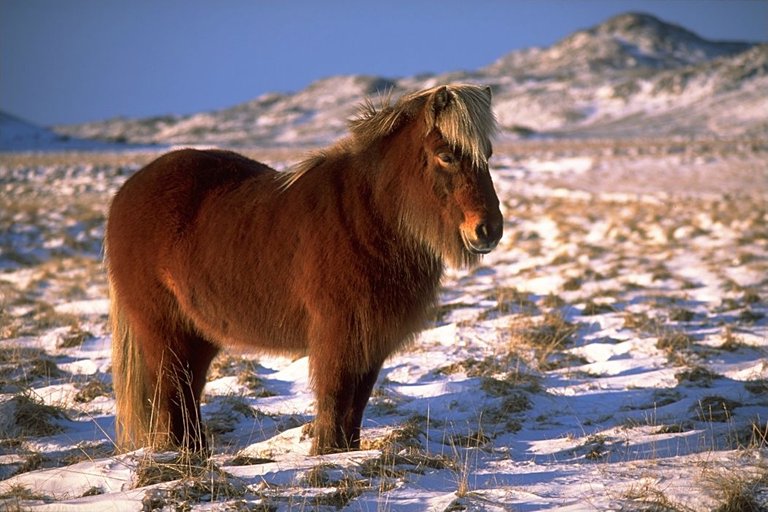
Image credit: Andreas Tille. Used under CC licenses: 1.0,2.0,2.5,3.0.

The story of the Icelandic horse began more than a thousand years ago. The first Viking settlers arrived in 870, or 874. The island was uninhabited. (Although, it has been suggested that Irish monks lived on the island before the Vikings' arrival, but that these hermits abandoned the place by 870.)
The Arctic Fox, Iceland
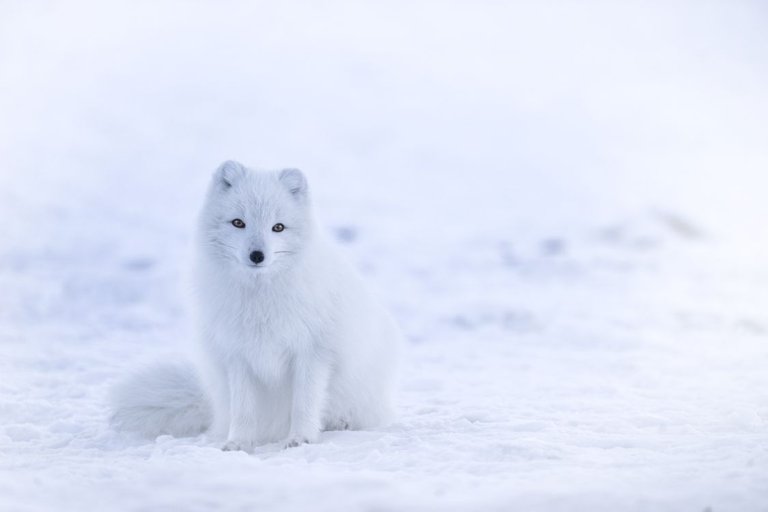
Image credit: Jonathen Pie. Released into the public domain. The arctic fox is believed to have lived on Iceland since the end of the last Ice Age.
The Vikings traveled in long boats, and in a series of voyages brought horses, cattle, sheep, hens and goats. When they arrived, the only native land mammal in Iceland was the Arctic fox. The horses that exist in Iceland today are direct descendants of the horses that came on those first Viking boats.
Over the centuries, Icelandic horses adapted to a challenging, subarctic environment.
Icelandic Horses Summer Coat
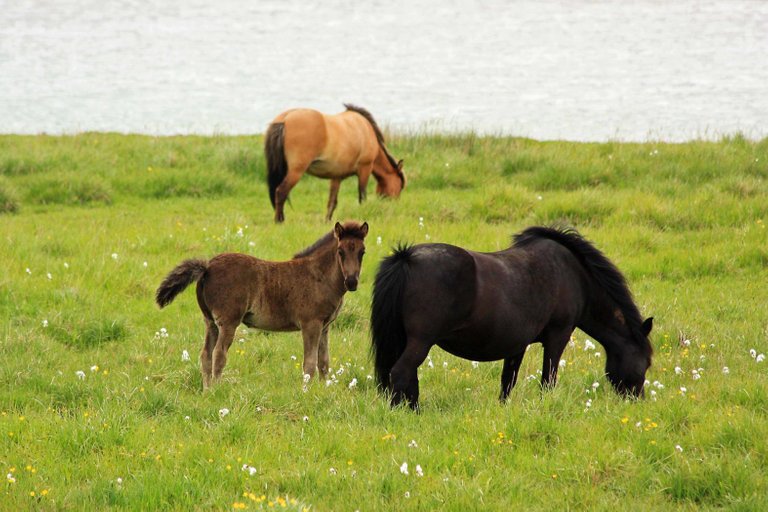
Image credit: Andrea Shaffer. Used under CC 2.0 license.
The Icelandic horse is small, so small that in another context it might be called a pony. The chief difference between a pony and a horse is size. Ponies generally are under 56.8 inches. The Icelandic horse is usually between 52 and 56 inches. And yet, it is a horse that is highly prized.

The horse is known for its strength, despite its small size. It is reputed to have a gentle temperament. One thing that distinguishes it from other horse breeds is its gait. It is the only five-gaited horse. According to the website Riding Iceland, the five gaits of the Icelandic horse are the walk, the trot, the canter, the flying pace and the tölt. Only Icelandic horses have the tölt. It is a gait in which the horse has one foot on the ground at all times. This gives a smooth, jolt-free ride to the equestrian.
Not all Icelandic horses have the five gaits. When a horse achieves this, it is called a "dream horse".
Here's a Youtube video showing the tölt
In order to protect the purity of the breed no horses may be imported into the country. And, if a horse leaves Iceland, it may never come back. There are few horse diseases in Iceland and no vaccinations are required
Geography and climate have helped the Icelandic horse to evolve into the hardy animal it is today. One aspect of geography that abetted the horse's unique evolution is the fact that Iceland is an island nation. And then, that natural isolation was reinforced by a government policy that has been consistent (with regard to horses) since 982. In that year Parliament passed a law prohibiting the importation of horses.
Lögberg, Law Rock, Thingvellir, Iceland
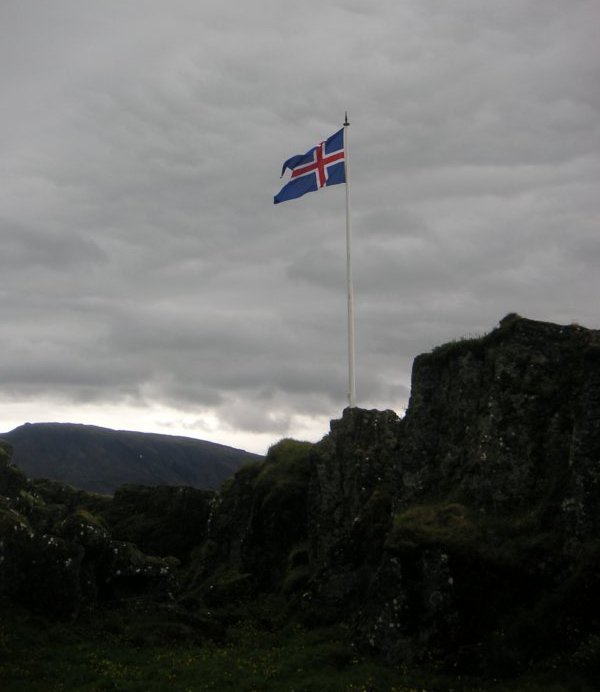
Image credit: Kyle MacLea. Used under a CC. 2.5 license. The caption under this picture reads: "At the Law Rock...the Lawspeaker, or lögsögumaður, took his seat as the presiding official of the Icelandic Althing (Parliament)". The Icelandic Parliament was founded in 930, and is one of the oldest parliaments in the world.
The Adaptation of the Icelandic Horse
The Icelandic horse is a result of inbreeding, and natural selection. According to the United States Icelandic Horse Congress, no genetic material has been introduced to the breed since the first horses arrived with the Vikings. The rest of the work to mold the horse was done by the harsh Icelandic environment.
The horses' short, stout legs and small hooves are designed to navigate Iceland's rocky volcanic terrain. The horses have a double layer coat and extra long fur on their outer coat to protect them from the bitter Icelandic winds. Even their body shape helps to keep them warm during the coldest winter months By reducing surface area, a body mass ratio is created that requires less energy to keep warm.
Icelandic Horse in the Snow
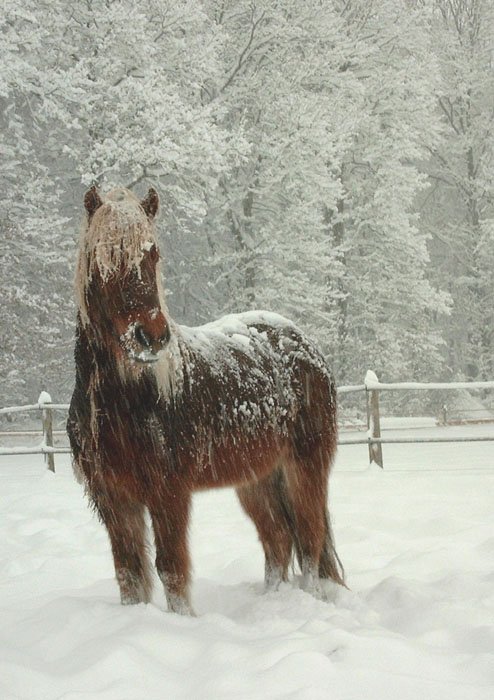
Image credit: Thduke. Released into the public domain.
Icelandic horses have adapted to an environment in which grazing offers sparse opportunities. The horses don't require high-grade grass, but can forage on a variety of plants. Many Icelandic horses are not stabled, but are kept outside, through the winter.
The Icelandic horse lives a long time. The average lifespan is between 25 and 30 years, but some live into their forties. It has been reported that one horse even lived to the ripe old age of 57.

Lakagígar Eruption of 1783
in 1783, a fissure around Mt. Laki in Iceland erupted. The ash that spewed into the air killed 50%-80% of the livestock and 25% of the people in the island nation. The eruption lasted from June of 1783 until February of 1784. Some sources report that most of the horses in Iceland perished. The small number of horses that survived were among the hardiest the island nation had to offer. Every horse in Iceland today is descended from those survivors.
Icelandic Horse on Rocky Terrain
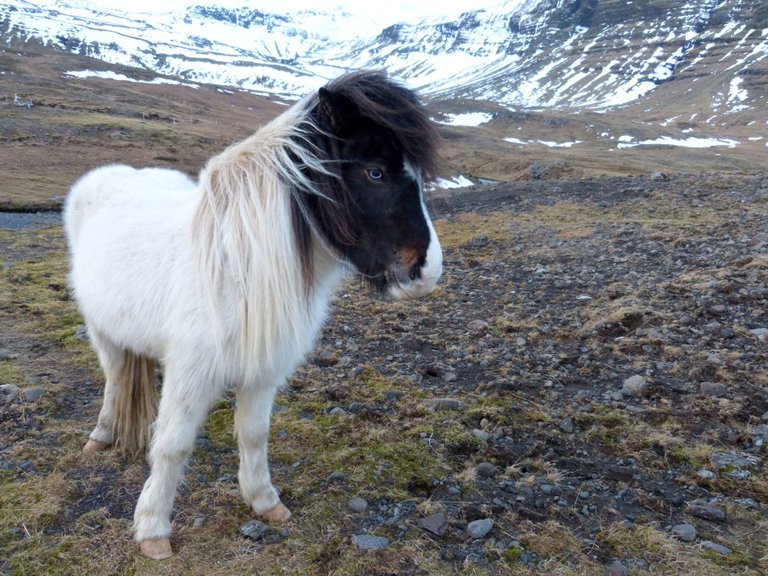
Image credit: gailhampshire from Cradley, Malvern, U.K. CC 2.0
Today, about 300,000 people live in Iceland, and 80,000 horses. In 2017,according to Iceland Magazine, 2700 foals were born. Of these, 40% were exported. Horses are big business.
Horses as Food
(Information derived from the Reykjavik Grapevine) When reading this section, keep in mind that horses were essential to survival for the earliest Icelanders. The animals were transportation. They were work horses. And they were food. Today, some horses are still food.
It seems that there are many paths to being consumed. If a horse is ill tempered, it may go to the slaughterhouse. If it cannot be trained for riding, it may go to the slaughterhouse. And then there is the foal market.
Icelandic Foal
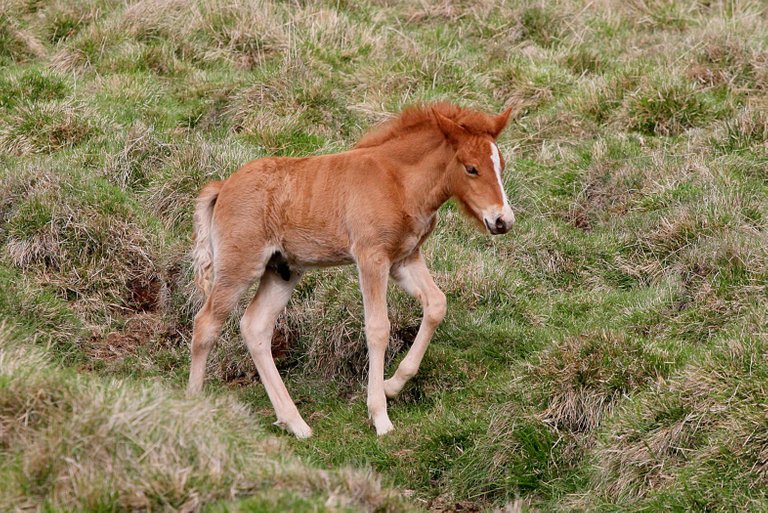
Some farmers produce large numbers of foals that are intended to be sold as foal meat. It seems that foal meat is considered a national specialty. Horse meat and foal meat may be found on restaurant menus.

Please note: The horse illustrations (silhouettes and GIFs) are mine, created for this blog. I sketched the images by hand, then edited them digitally.

Some sources used in writing this blog
1.https://icelandictimes.com/132318/
2.https://www.icelandtravel.is/blog/vikings-in-iceland/
3.https://en.ni.is/fauna/mammals
4.https://www.blaklader.com/en/articles/garden
5.https://www.iceland.is/the-big-picture/nature-environment/vegitation-wildlife
6.https://wsimag.com/science-and-technology/2785-the-icelandic-horse
7.http://www.riding-iceland.com/blog/the-five-gaits-of-the-icelandic-horse-make-it-a-breed-apart
8.https://www.horsejournals.com/popular/breed-profiles/icelandic-horse
9.https://iamglytja.com/our-icelandic-heritage/
10.https://www.icehnz.org.nz/breed-info
11.Law rock
12.https://www.britannica.com/topic/Althing
13.https://icelandics.org/breeding-standards
14.http://www.harmonyicelandics.com/testimonials/2018/1/1/the-hardy-horse
15.https://ker.com/equinews/icelandic-horses/
16.https://www.horsetalk.co.nz/2016/08/20/survival-fittest-extraordinary-icelandic-horse/
17.https://nat.is/the-icelandic-horse/
18.https://www.katlageopark.com/geosites/lakagigar/
19.https://thinkorangemagazine.com/icelandic-cuisine/
20.https://grapevine.is/mag/articles/2019/02/27/food-of-iceland-horse/
21.http://www.pferd-und-fleisch.de/Horsemeat/iceland.htm
22.https://meetinreykjavik.is/subarctic-weather-vibes/





Enjoyable, entertaining, and educating read. The tolt gait looks really amazing from the video. Would be interesting to know how well the horse can fare in battles. Thanks for always giving us something special to read from you.
Thank you my friend, @gentleshaid. I think the blogs work best when we are enjoying them as we write them. I really liked learning about these horses, and looking at their pictures/videos. I'm so glad that interest comes through.
I appreciate your kind comment and your support.
I always find it beautiful how nature always manages to find a way, nice read! !LUV
Thank you very much for your support. I love to write about nature! We are, after all, a part of it.
We really are a part of it and that is 100% something that some of us forget! !LUV
@agmoore, you were given LUV from @blockchainyouth. About LUV: https://peakd.com/@luvshares http://ipfs.io/ipfs/QmUptF5k64xBvsQ9B6MjZo1dc2JwvXTWjWJAnyMCtWZxqM
Thanks for your contribution to the STEMsocial community. Feel free to join us on discord to get to know the rest of us!
Please consider supporting our funding proposal, approving our witness (@stem.witness) or delegating to the @stemsocial account (for some ROI).
Thanks for including @stemsocial as a beneficiary, which gives you stronger support. Using the STEMsocial app could yield even more supporti next time.
Thank you stemsocial! Your support is very much appreciated.
They are some of the most graceful horses in the world.
I've never seen one, except in pictures. Amazingly beautiful.
@agmoore, you were given LUV from @blockchainyouth. About: https://peakd.com/@luvshares https://ipfs.io/ipfs/QmUptF5k64xBvsQ9B6MjZo1dc2JwvXTWjWJAnyMCtWZxqM
Thank you!
Such beautiful creatures!
They are beautiful. I had a pleasant time writing this blog :)